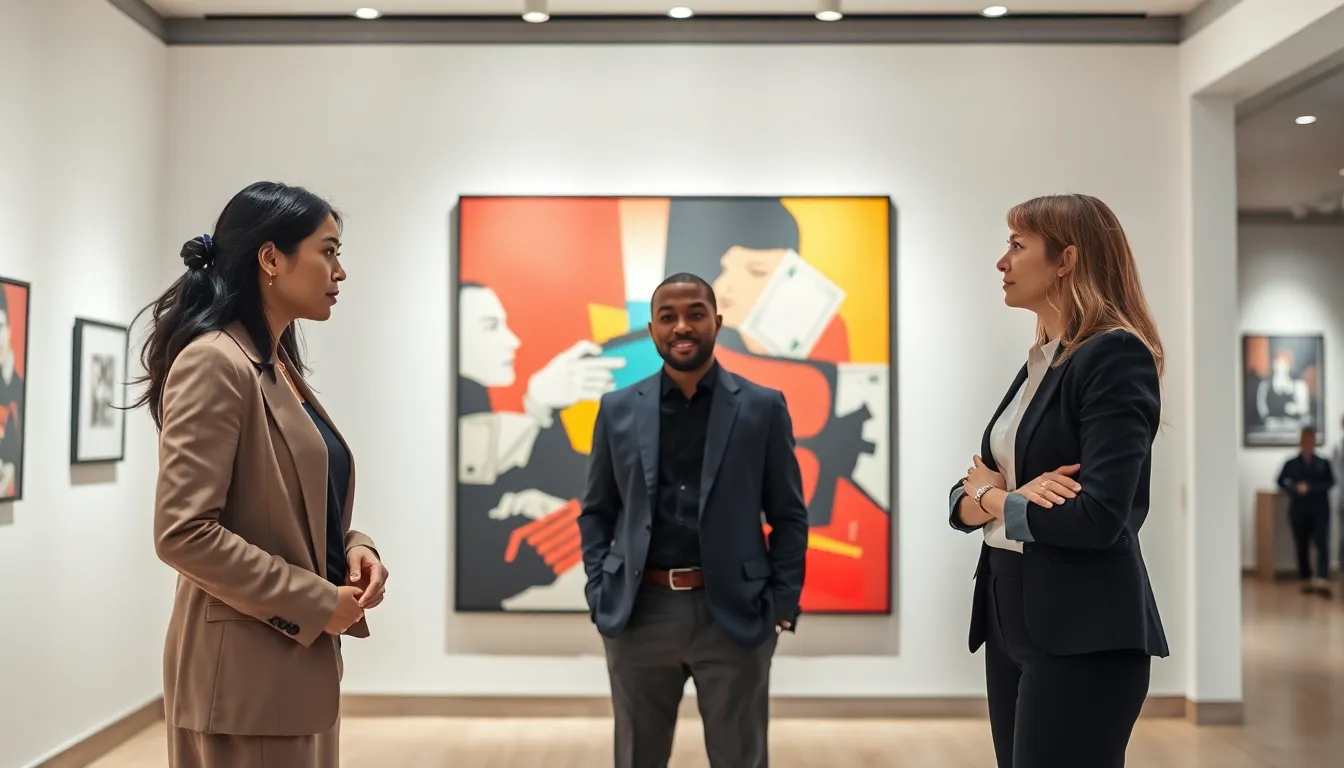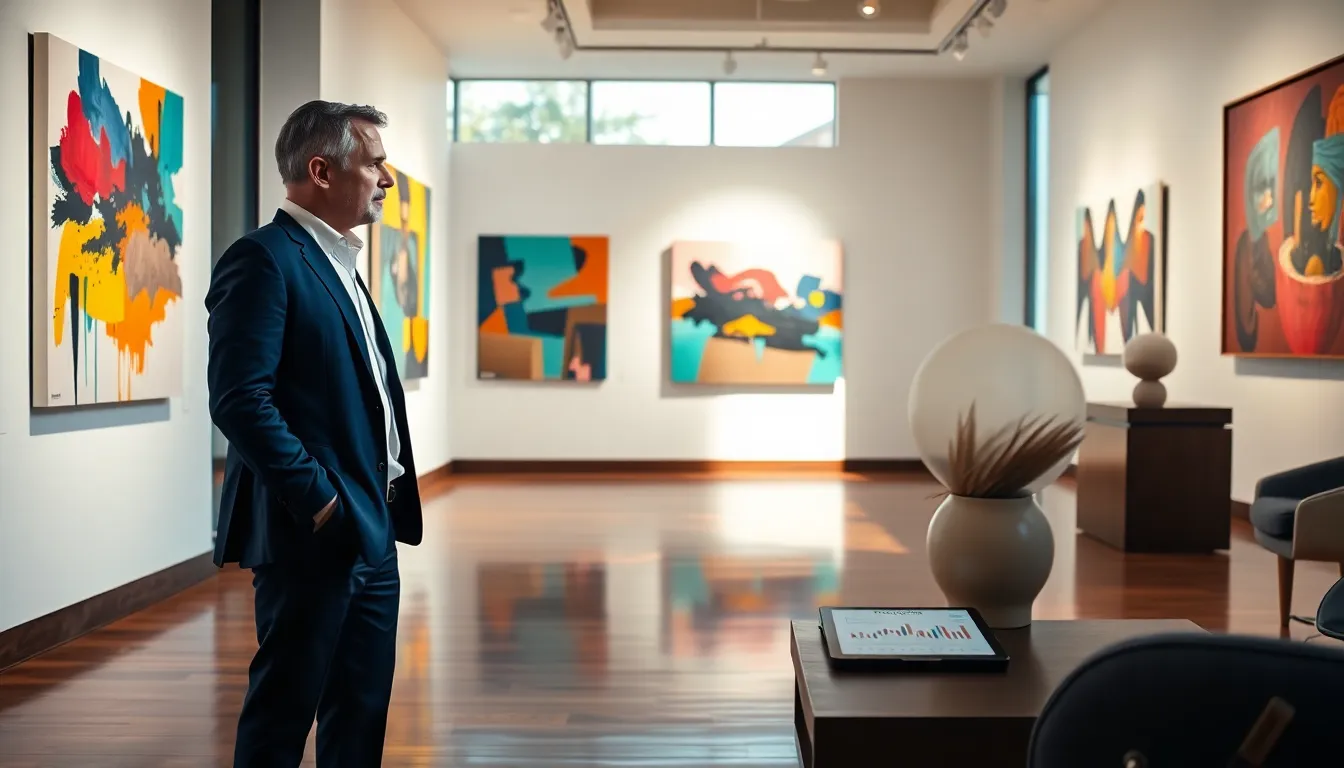Table of Contents
ToggleEver gaze at a seemingly random splash of paint and wonder, ‘What is this really worth?’ Well, hang on to that thought. The world of modern art is not just a place for creativity: it’s also a canvas for convoluted financial escapades. Money laundering in the art world is as elusive and creative as the artworks themselves, leaving many scratching their heads. In this quirky juxtaposition of aesthetics and ethics, art often serves as a perfect cover for shady financial maneuvers. Let’s dive deep into this shadowy underbelly of art and finance, where the stakes are high, and the brushstrokes even higher.
Understanding Money Laundering in the Art World

Historical Context of Art and Money Laundering
Throughout history, art has been a reflection of wealth, societal structures, and sometimes, corruption. From the Medicis in Renaissance Florence to modern-day oligarchs, the intersection of art and money has always been fraught with implications. Art has acted as more than just decoration: it serves a larger purpose. Historical moments have seen wealthy patrons investing in art as a safeguarding mechanism against totalitarian systems. This inherently sets the stage for potential financial mischief, where valuable artworks could be strategically utilized to obscure the origin of funds.
Modern Mechanisms of Money Laundering
Today’s mechanisms for money laundering in the art world are sophisticated. A masterpiece’s price can fluctuate wildly, offering a perfect vehicle for illicit activities. Techniques used include underpricing, overpricing, and the use of shell corporations. Also, art transactions often occur in cash, creating gaps in documentation. These factors collectively enable criminals to transfer wealth seamlessly, exploiting a system that lacks stringent oversight. The art market’s opacity makes it ripe for these endeavors, effectively facilitating money laundering on a grand scale.
The Role of Art Dealers and Auction Houses
Art dealers and auction houses are pivotal players in the art market. They wield immense power in determining value. Often, dealers have the discretion to set prices without much scrutiny. Unfortunately, this gives leeway to engage in questionable valuation practices. When a dealer sells a painting for millions, they can easily mask the real value of piece art, so providing an avenue for laundering money.
Auction houses, with their glamorous bidding wars, amplify this situation. They attract wealthy collectors who may not ask too many questions. Unsurprisingly, this has allowed bad actors to exploit the system. Auction platforms serve as an excellent venue for inflated prices, where artworks become commodities rather than expressions of cultural value. Overall, the intersection of art and finance in this realm requires not just creativity, but also rigor in regulatory oversight.
Case Studies of High-Profile Money Laundering Cases
Legal Framework and Regulatory Challenges
In examining high-profile money laundering cases, legal frameworks present multiple challenges. While regulations exist, enforcement is often lacking. Take, for instance, the case involving Yves Bouvier, an art dealer accused of defrauding his clients by inflating prices and then later reselling them. Such incidents underscore the bureaucratic hurdles faced by regulators: the art world operates in a realm where laws lag behind financial innovation.
Global Efforts to Combat Art-Related Money Laundering
Countries are recognizing the need for stricter guidelines. The Financial Action Task Force (FATF) has issued recommendations aimed at curbing money laundering activities through art. Initiatives such as due diligence requirements for art transactions are gaining traction. Also, collaboration among international law enforcement agencies is becoming increasingly necessary. As art crosses borders, global cooperation can provide a panacea for this persistent issue. The efforts lay the groundwork for a more transparent art market, ensuring its integrity.
Impact on the Art Market and Society
Future Trends in Art and Money Laundering
Looking ahead, the fusion of technology with art could significantly alter the landscape of money laundering. Digital art forms and NFTs have emerged, attracting a new breed of collector. The rise of blockchain technology offers promise for transparency: but, it could also give rise to new challenges. The anonymity offered by cryptocurrencies poses risks, creating new channels for illicit activities within the art world. As the market adapts to these advancements, vigilance remains essential. Society must advocate and demand that art is not merely seen as a tool for laundering money but celebrated for its intrinsic value.




